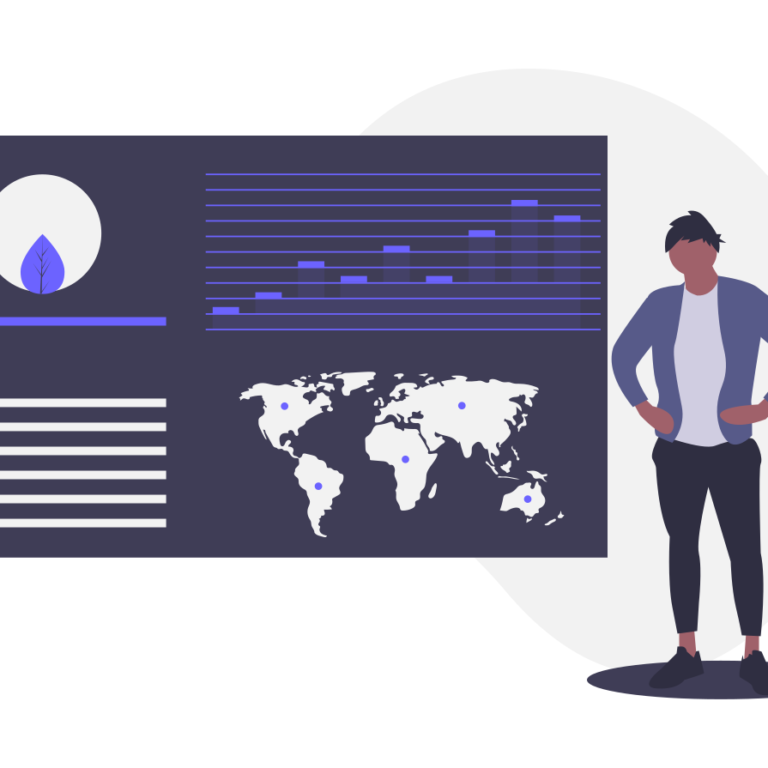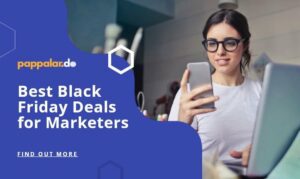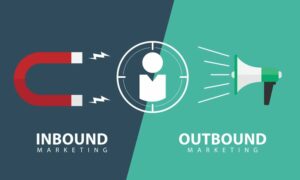If you look online, you’ll see a lot of tips and hacks that can help you improve your digital marketing campaigns. While those can be quite helpful if you’ve got a specific challenge that you’re trying to overcome, we thought it would be fun to take a step back and look at the 30,000 foot view. So here’s how we think about digital advertising when we start a campaign for ourselves or our clients.
If you’ve read much on Inbound Marketing, you’ve probably heard about the Buyer’s Journey being broken up into 4 stages. In order, you attract the people that might need your product or service, convert them into a lead by trading something of value for their contact info, close them into a customer, and then delight them so that they’re more likely to become a referral source. We’ve written a bunch about this in the past (check out this article about how digital marketing has changed in the last few years for more info).
When we became a Digital Marketer Certified Partner earlier this year, we gained access to a bunch of frameworks that do an even better job of breaking down these customer journeys. One of the most brilliant frameworks I’ve ever seen is what they call the Customer Value Journey.
It looks like this:

As you can see it’s broken down into 8 stages. and you start out in the bottom left – where you’re sad – and make your way all the way up to the top right corner – where you’re happy. The stages are: Attract, Engage, Subscribe, Convert, Excite, Ascend, Advocate, and Promote.
After you create your buyer persona, you can use this framework to think through your marketing strategy for every marketing channel – content marketing, social media posts, videos, and yes, digital advertising, which we’ll be discussing through the remainder of this article.
First of all, let’s quickly define each of these stages.
- The Attract Stage: You’re finding people that are likely to need your product and getting in front of them.
- The Engage Stage: You’re re-engaging with people who have been on your site or engaged with an ad, so that you can build trust.
- The Subscribe Stage: You’re offering something of high value in exchange for their contact information.
- The Convert Stage: You’re asking the prospect to commit to spending either a little bit of time or a little bit of money so that you have the opportunity to show them that you can solve their problems.
- The Excite Stage: You’re making sure that the customer has found some level of success with whatever the conversion action was.
- The Ascend Stage: You’re up-selling, cross-selling and re-selling your product or service to continue meeting the customer’s need. Note: This is the stage that you really start to be profitable.
- The Advocate Stage: You’re asking your happiest customers to leave online reviews of your brand, product, or service.
- The Promote Stage: You’re inviting your best customers to promote your product or service through some sort of structured referral system.
Over time, you’ll create several Customer Value Journeys, one for each buyer persona that you have and for each product or service line that you have. And this should be an iterative effort, meaning you’re constantly defining and redefining these stages, testing new tactics and improving your lead flow over time.
Pro Tip: When we talk about our goal of helping 10 businesses double in size over the next year, a huge part of this is creating the Customer Value Journey. If we can increase awareness by 10%, increase how we’re engaging with those people by 10%, get 10% more leads, convert 10% more of those leads, excite 10% more customers, and cross-sell or up-sell 10% more often, you will see massive growth. This worksheet is the key to all of it. That’s why we spend so much time on the Customer Value Journey in both our free Double Your Sales Discover Session, as well as our 90 Day Growth Accelerators.
So let’s think about how we can use the Customer Value Journey to guide our digital advertising activities. We’ll focus on running a good Facebook Ad Campaign, although you can run a similar campaign through Google, Youtube, Instagram, LinkedIn and any other channel that you choose. (Pro Tip: Start with just Google and Facebook, since they’re the big dogs).
Stage 1: Attracting New People To Your Brand
We could write a whole blog post just about this (and we probably will some day), but right now I just want to share one of my favorite strategies with you. Facebook has lots of data on just about everyone. Some of that behavior is information that you share with Facebook, maybe by filling out the Interest section of your profile. A lot of that data (and honestly, the most valuable data) is behavioral data. What types of things are you interacting with, what websites are you browsing, what types of ads or posts do you engage with, are you an impulse buyer, and the list goes on.
While you could browse through all of Facebook’s interest categories and select what you think your customers would be interested in, I would encourage you not to do that at first.
Instead, use what Facebook calls Lookalike Audiences. The general idea here is that you upload a list of your best customers to Facebook and then tell Facebook to go find more people like that. Facebook then uses their AI to determine what your best customers have in common and build a “Lookalike” audience that mirrors them. It’s a very simple, very effective way of getting your ads in front of the right people. And, what I love, is that it takes very little brain power from you.
Pro Tip: If you haven’t already invested in a CRM, which stands for Customer Relationship Management and is a fancy name for a customer database, I would highly recommend it. Most CRMs have a feature that allows you to sync your customer list with Facebook in real-time, meaning as you get more customers, the list that you’re feeding Facebook gets larger and they have more data to pull in an even better audience for you. I prefer HubSpot, and if you’re interested in seeing all of the bells and whistles, you can schedule a HubSpot demo here. Oh, and did I mention that HubSpot’s CRM is free?
Stage 2: Engaging with the people you just attracted
Okay, great, you’ve got people coming to your site now. Awesome! Depending on what you’re selling, maybe people have started buying, and maybe they haven’t. This is where retargeting ads start to come into play. This takes a little bit of configuration, but you’re able to tell Facebook that when someone comes to your site and doesn’t take a desired action, then we want to show them a different ad.
We can assume since they’ve been to your site that they are at least relatively familiar with your brand, and can start providing value. That might be in form of tips, sharing blog posts, or showing them videos.
The goal with this stage is to just get them to engage with you and for you to provide value to them. We’re not worried about the sale yet, we’re just trying to build trust.
Stage 3: Get them to subscribe to your email list
After they’ve engaged with you and you’ve had a chance to provide value, you want to ask for their email address. People are sick of spam and won’t just give it to anyone that asks – instead, you’ll need to provide something of value in exchange for their contact info. That could be an ebook, a discount on a first purchase, some sort of industry paper, or an invitation to an online event like a webinar.
Since different people respond to different things, you might want to have several different types of offers to see what works best and to appeal to your different persona types.
You’ll use the Facebook Custom Audience tool to create the audience for this stage. For instance, you might want to show Engage ads to anyone that has viewed 5 or fewer pages on your website, and once they view more than that, you start showing them Subscribe Ads.
Pro Tip: I highly recommend the Lead Ads for this stage. When you set up a Lead Ad, it will show the prospect a form when they click on the ad. And since Facebook knows a bunch of information on your prospect, it can pre-populate a bunch of the fields for you – like First Name, Last Name, Phone Number, or Email. These types of ads work best when you can sync the contact’s info to your CRM and then automate a series of emails to go out.
Stage 4: Get them to spend time or money with you
This is generally a continuation of Stage 3. For instance, if you sent them a discount code for their first purchase, and they haven’t used it yet – then let’s show that person ads to get them to use it! Same with a webinar link, they complete the Subscribe stage when they sign up for the webinar, and complete the Convert stage when they actually attend the webinar.
Stage 5: Get your customer excited about your product or service
We’re getting into the later stages of the customer value journey, where the advertising strategy will change depending on the exact action that you’re wanting your customer to take.
Here are a few examples of what the Excite Stage could look like.
When someone test drives a Tesla, part of the test drive is The Launch. When someone experiences a Tesla go from 0-60 in 2 seconds, they are MUCH more likely to buy one than if they’re not. It’s no wonder that one of Tesla’s key metrics is how often a launch is done during a test drive.
When someone signs up for Twitter, they are pushed to follow at least 20 people so that they have a better chance of “getting it” and sticking around for a while.
Popular email tool Constant Contact reworked their onboarding flow so that people created their newsletter template first before uploading their contact list. Since the contact upload can be a little confusing, and the newsletter design is easy and rewarding, they found that people had more success when they designed the email first.
We’d encourage you to look at the customers that have the most success with your product or service and figure out what they’re doing that others are not doing. How can you work that special thing into your workflow?
Pro Tip: Although this article is about digital advertising, the way that you create excitement might not be through an ad. In all three of these examples, it’s got more to do with how you sell and how you treat the experience immediately after. There may be a place for ads here (for instance, Twitter might run a campaign to anyone who has not followed 20 people or more), and there may not. Don’t force it if digital advertising doesn’t make sense for this stage.
Stage 6: Up-selling, Cross-selling, and Re-selling to your customers
This is the money maker. By this point, you have their email address and permission to contact them and you are using ads to supplement the rest of the marketing that you’re doing.
I’ll pull the curtain back and use our company as an example. Our Conversion action is our free Double Your Sales Discover Session. It’s a 90 minute brainstorm where we look at how we can use the Customer Value Journey to double your sales. If the prospect is a good fit and I’ve done my job well, they should be very excited and they should also leave that meeting with some homework – to finish filling out their first Customer Value Journey. Our Excite Stage is completed when they have an “Ah Ha!” moment – when they can clearly see the path forward and the impact that it can have on their growth.
Now, if I stop there, then the business goes broke, because all we’ve done is give away a tremendous amount of value for free. That’s why it’s important to capitalize on that “Ah Ha” moment to try to sell our first, foundational product, the 90 Day Growth Accelerator. This is a series of workshops spread out over 90 days where we build out their Customer Avatar, finish their Customer Value Journey, put together the key metrics that they should be looking at, do a deep dive into the Excite and Convert stages, help overcome any challenges that exist in any of the other stages, and provide general consulting and accountability for the course of the 90 days.
If they need time to think about it, then we run a multi-channel marketing campaign toward them – emails, ads, and texts pushing additional content, customer success stories, and blog articles.
If they complete the 90 day growth accelerator, then we either move into some sort of retainer relationship or they take what they’ve learned and decide to continue on by themselves. Obviously, for us, we want the retainer relationship, so if they need time to think about it or if they say no at first, we send the occasional email and show them the occasional ad to stay top of mind and let them know that we’re here to help them when they get stuck doing it themselves. We know, statistically, that they probably will get stuck, so this is a very effective strategy.
It’s impossible to give a blanket statement about what this stage would look like for you. If it’s an eCommerce store, then it’s cross-selling related products or possibly re-selling the same product if it’s something that needs to be periodically replaced. Maybe it’s getting them to turn on some sort of auto-ship program.
For a service industry, it might mean selling a maintenance contract, so that you can stay top of mind and notify the customer when there is a problem before something breaks down.
For a professional service industry, it might be highlighting different services or programs that the customer hasn’t bought but would likely need.
Use digital advertising to supplement your other marketing channels for the best effect. For instance, if you’re going to email someone about a particular service, also show them an ad for that product. People are more likely to recall you when they see your brand in multiple places.
Stage 7: Ask for reviews
This is typically handled through email or text. We actually wrote a whole article about this stage, which you can find here.
Stage 8: Create brand ambassadors
This stage may not be appropriate for every company, but it is definitely worth taking a look. If your customers are likely to know others that need your product or service and it feels appropriate to incentivize them to ask, then you should start to look at an ambassador, referral, or affiliate program. The general idea is that you buy some sort of software that creates a unique link for people and when they share that link, they get a reward every time someone buys. That reward might be money, might be free product or a discount, or it might be company swag.
Ads could be used here, although it may make more sense to handle this through email or text, since you’ll be inviting your best customers.
So there you have it. That’s a blueprint for a great digital ad strategy. Of course, if you’re feeling overwhelmed by all of this information, don’t hesitate to reach out for an digital ad review or even to schedule your very own Double Your Sales Discovery Session.
{{cta(’33a1ada3-a137-4020-a769-a8c36e667cc7′,’justifycenter’)}}





